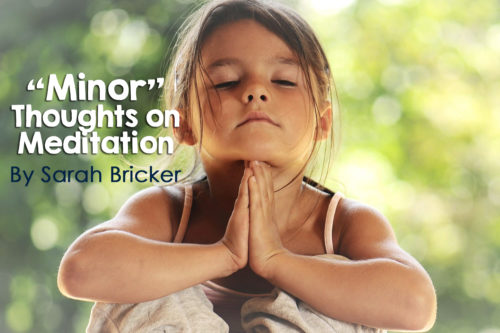
In 2012, the Dalai Lama was quoted saying,
“If every 8 year old in the world is taught meditation, we will eliminate violence from the world within one generation”.
This statement is very powerful for any visionary, but at some point, the word “meditation” picked up a negative connotation in our society. Meditation is perceived as an activity that is owned by a few exclusive religions, and requires sitting on a mountaintop with your legs crossed, humming a one-note tune. Although this visual is a form of meditation, it is not the heart of meditation. Meditation is all-inclusive, and is a simple and yet influential means of practicing holistic health, by reducing stress. According to a Harvard study performed in 2016 by Sara Lazar, PhD, “Stress-related health problems are responsible for up to 80% of visits to the doctor and account for the third highest health care expenditures. Mind-body practices like meditation have been shown to reduce your body’s stress response by strengthening your relaxation response and lowering stress hormones like cortisol.” Where there is an increase in peacefulness, there is often an increase in joy, and therefore a reduction in violent acts and negative sensations.
Meditation requires very little to get started, but it teaches concentration and self awareness, and it provides clarity and peacefulness. If you’re thinking right now, “hey wait, I might have been meditating yesterday on my evening run” then you’d be right! Your breathing is paced, you were likely focused on a specific landmark, you unconsciously zoned in and out of thought, and you probably felt more at peace once the workout was complete. Most of us of accidentally engage in mediation through daily activities (like taking a relaxing bath, or during your regular commute to work) but in order to fully gain the benefits of meditation, we must be more deliberate about carrying it out.
Teaching children meditative habits may sound taboo, but who better to teach peace-inducing practices to than those who face the temptation of throwing a tantrum on a daily basis. In 2013, Robert W. Coleman Elementary School in Baltimore, Maryland replaced their detention room with a meditation room in hopes of teaching children how to face adversity with a level head. These students are taught to find a sense of peace by focusing on themselves and thinking before they act, using techniques like yoga and guided meditations. Since the instigation of this change, the school has seen a reduction in violence, and zero suspensions. This may not be exactly what the Dalai Lama had in mind, but it’s a start!
If you are looking for resources to help you get started with leading your kiddos through meditation routines, consider the books “Good Night Yoga” by Mariam Gates or “Starbright Meditations for Children” by Maureen Garth.
Physically, your body experiences meditation much like a chiropractic adjustment. This is achieved by re-aligning the spine, which allows the Central Nervous System to process data freely, and therefore transition into a para-sympathetic state of well-being. In other words, when the body is supported properly, it will shift to a state of internal rest. This allows the body to heal, digest, and produce happy hormones. To learn more about chiropractic, or to join us for one of our meditation classes, contact the office at 317-863-0365.
Yours in health,
SFC
The information provided by the Stillpoint Family Chiropractic Wellness Blog is not intended or implied to be a substitute for professional medical advice, diagnosis, or treatment. All content, including text, graphics, images, and information, contained on or available through this website is for general information purposes only. Stillpoint Family Chiropractic assumes no responsibility for its accuracy, and encourages its readers to confirm all details from alternate sources, and any and all content is subject to change without notice.
